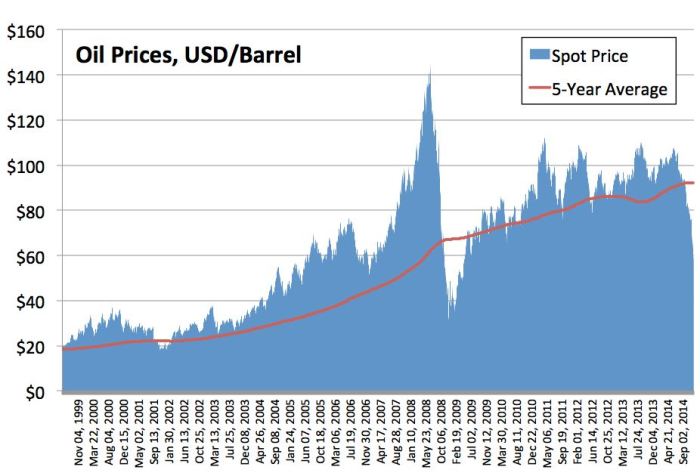A Parallel Universe Where FIEM Wasn't Gutted
It’s time to push back against this lazy narrative that puts the entire blame for Venezuela’s economic chaos at the feet of falling oil prices. It’s non-sense.
As Daniel Pratt put it, Venezuela had the institutions it needed to prepare for a fall in oil prices. The main one was called FIEM and it was a Macroeconomic Stabilization Fund designed very specifically to prvent situations like the one we have today, by saving any windfall oil income above the average for the last five years in a rainy-day fund.
Pratt’s post made me think: well what would’ve happened if Chávez had just followed the FIEM rules? How much money would the Venezuelan state be sitting on if it had just left good-enough-alone and followed the rule it inherited?
Under FIEM rules, the whole blue area above that red line ought to have been set aside for a rainy day. (The brief period in 2009 when the red line was above the blue area was one time when we could’ve made up the shortfall with money from the fund.)
So exactly how much money should be in FIEM, but isn’t? For the answer, you gotta click through to my Guest Post over on BeyondBRICS [free, but registration required.]
Caracas Chronicles is 100% reader-supported.
We’ve been able to hang on for 22 years in one of the craziest media landscapes in the world. We’ve seen different media outlets in Venezuela (and abroad) closing shop, something we’re looking to avoid at all costs. Your collaboration goes a long way in helping us weather the storm.
Donate





